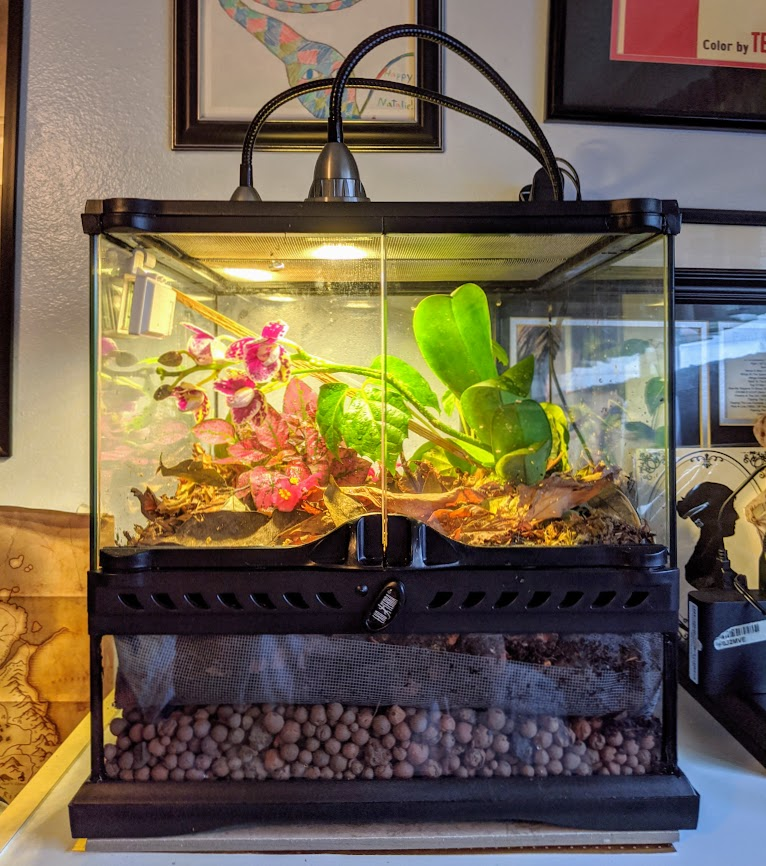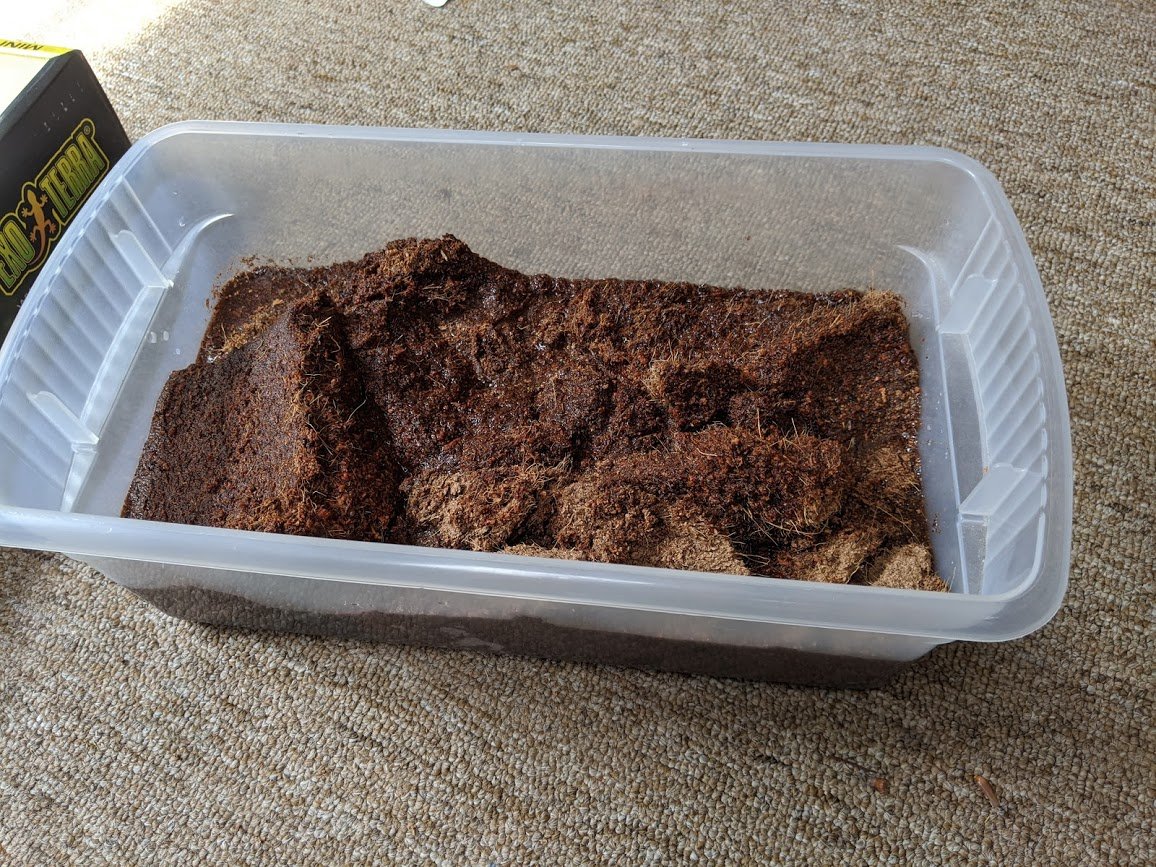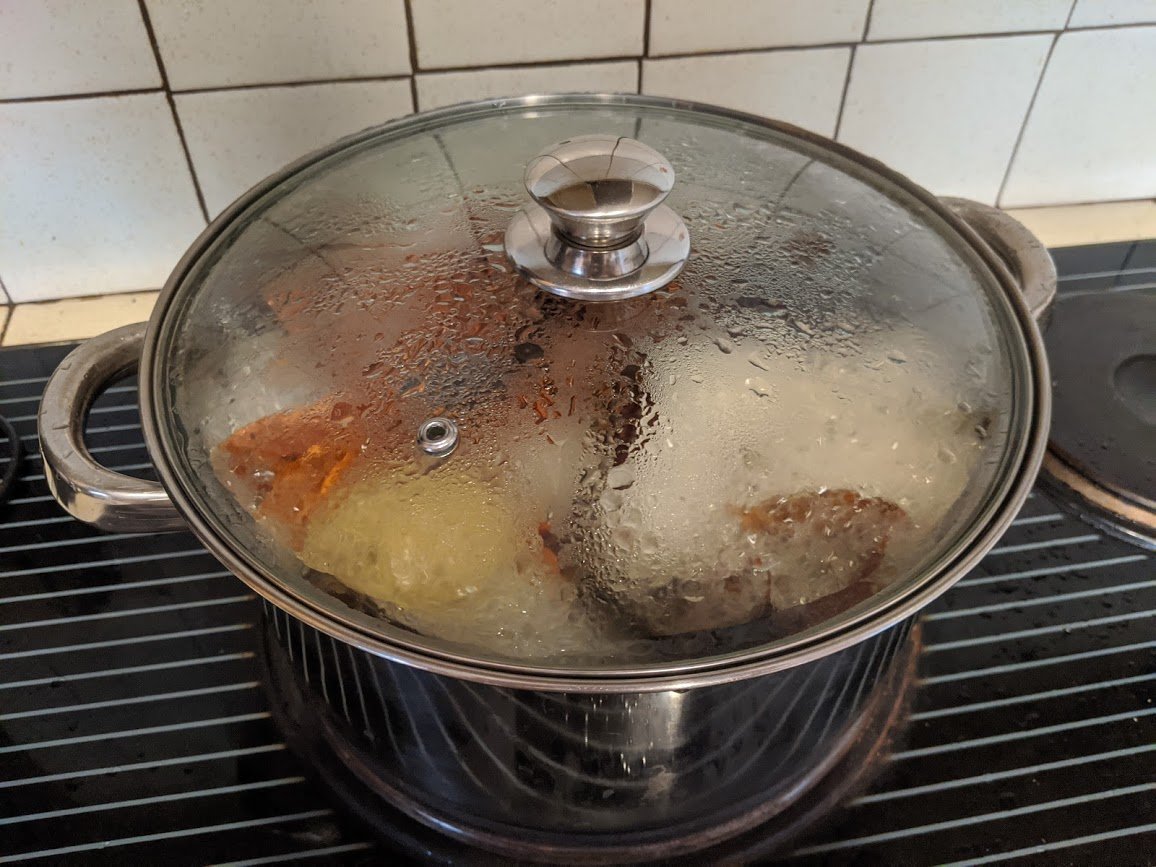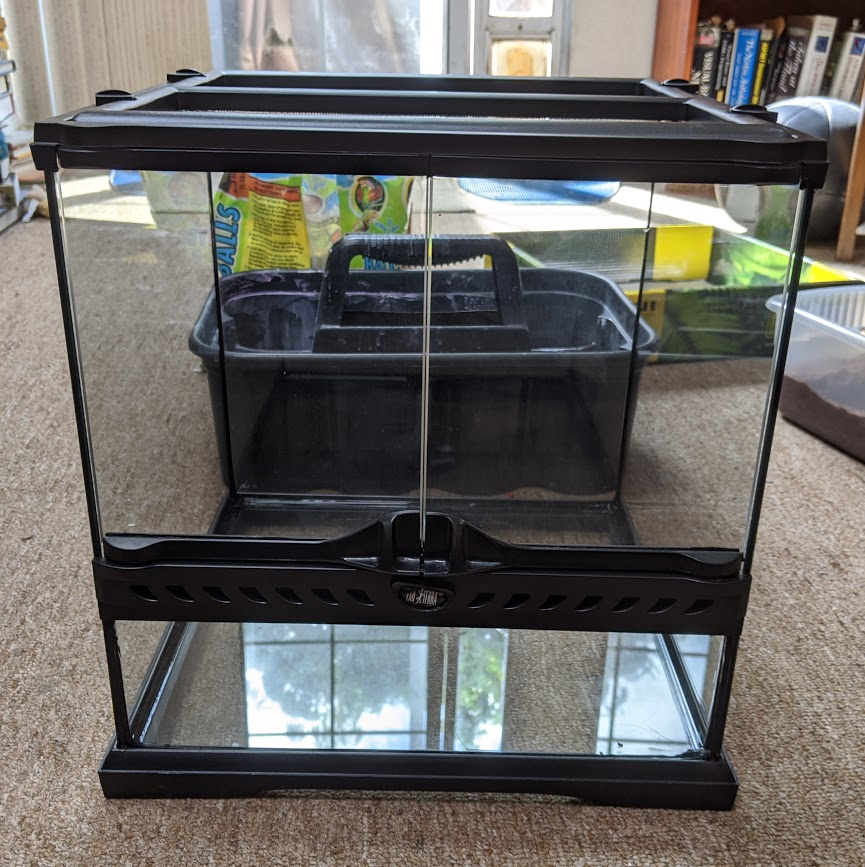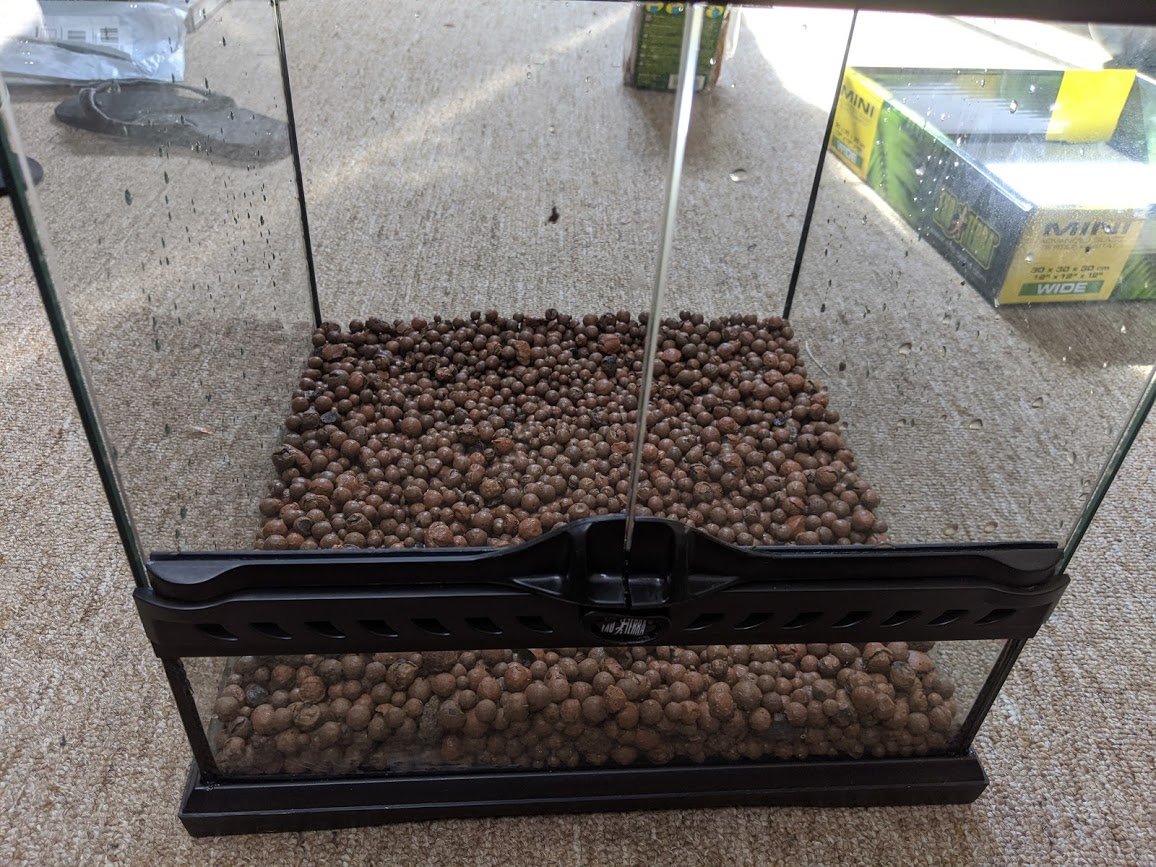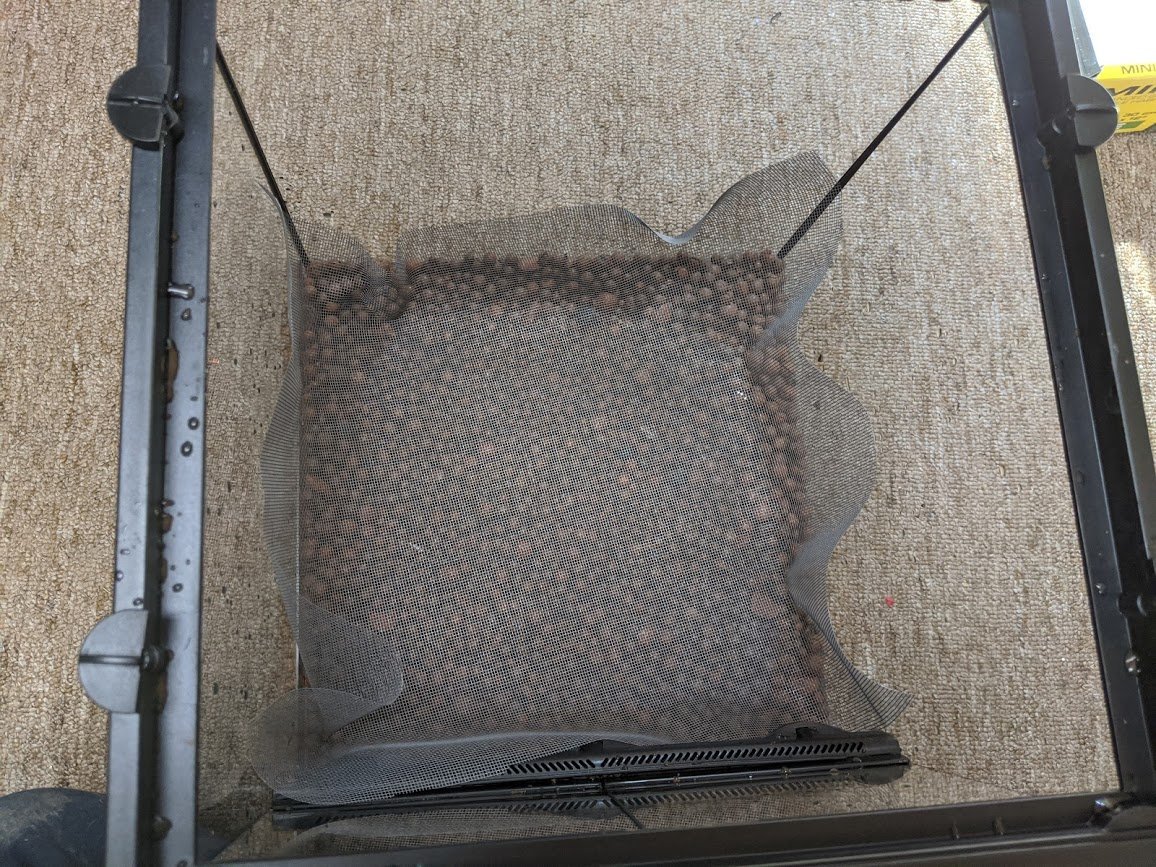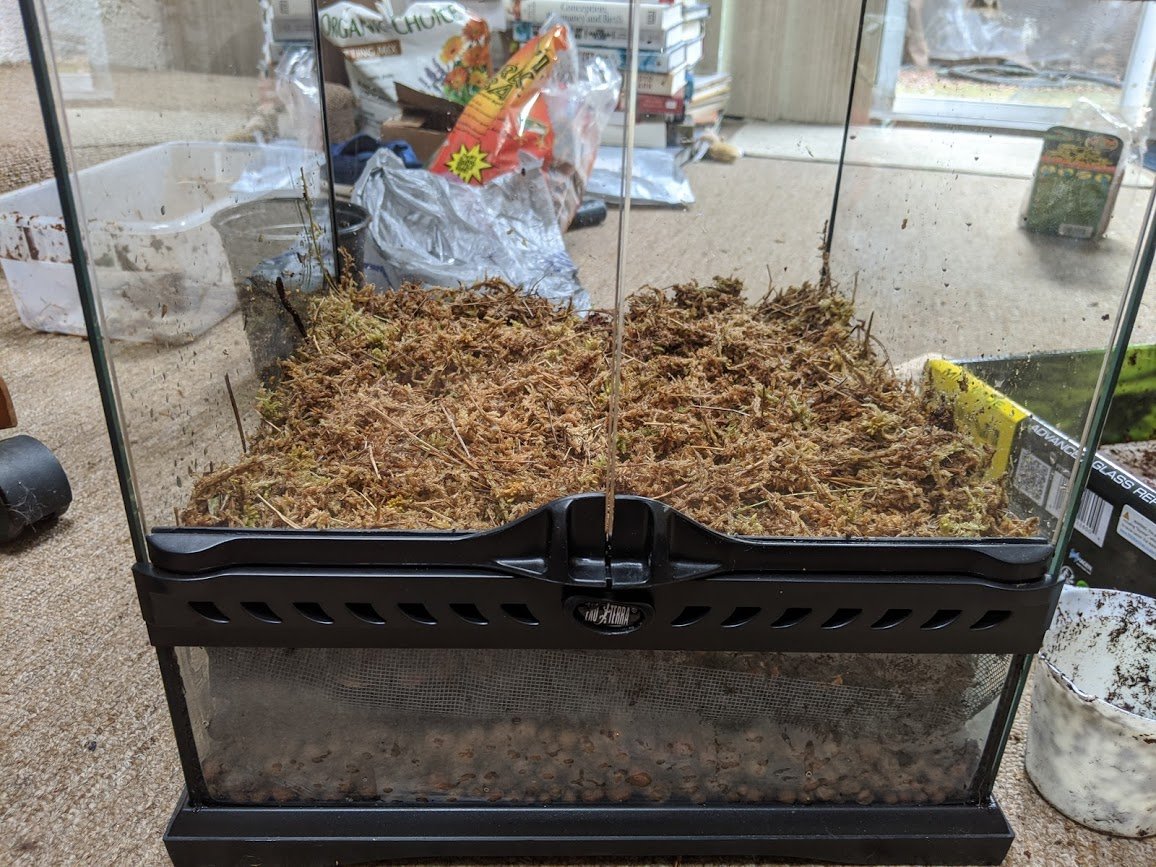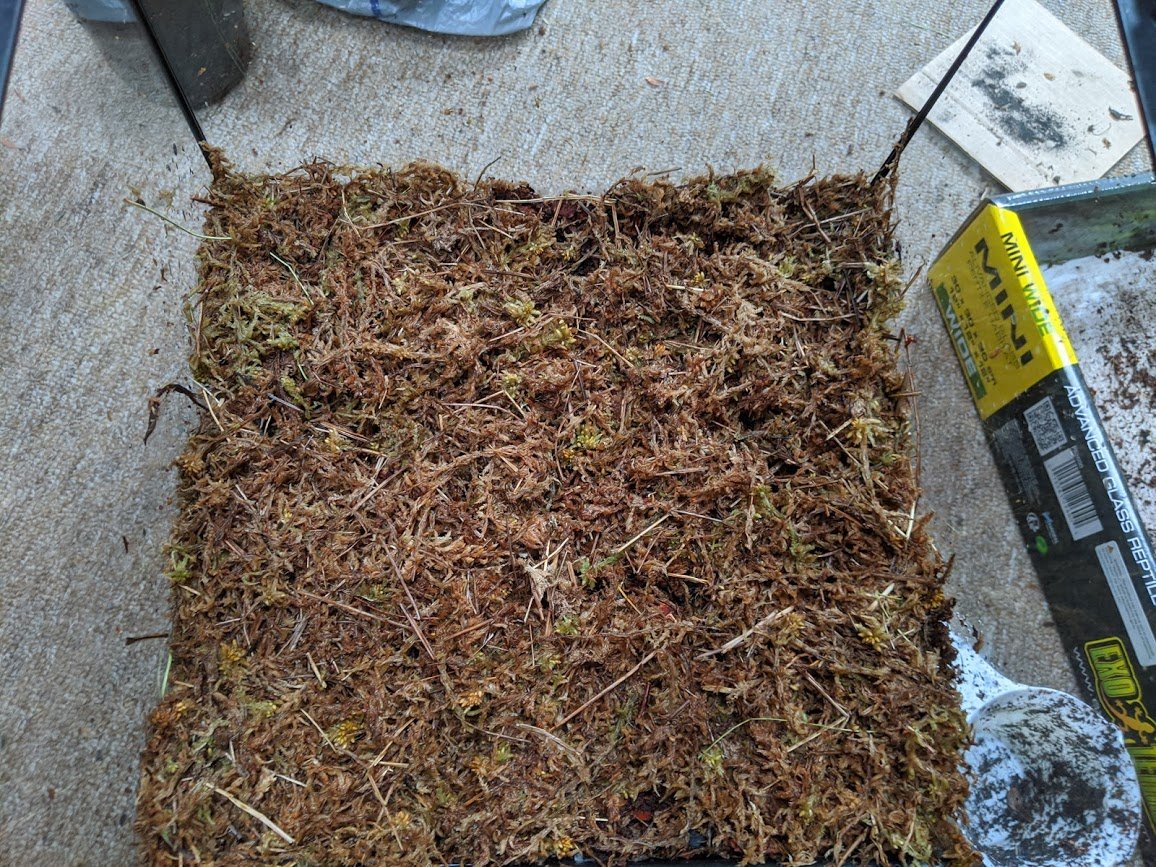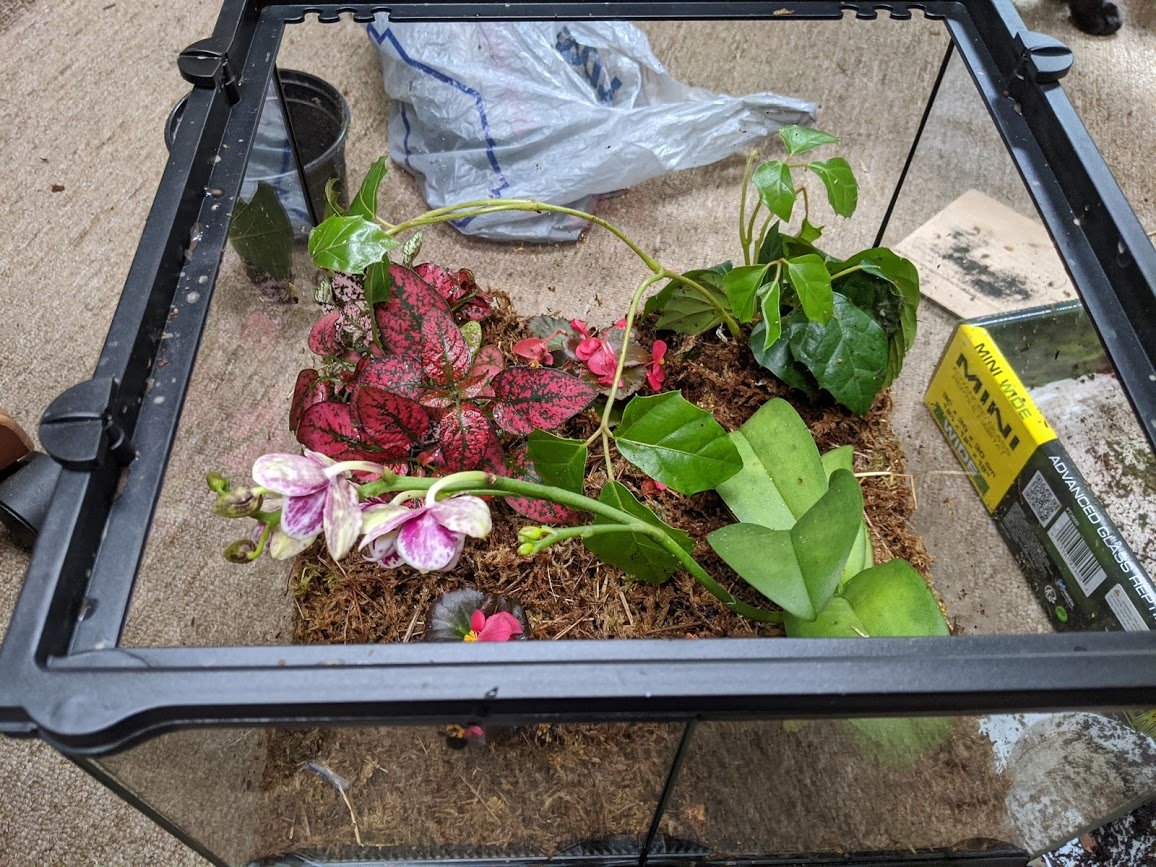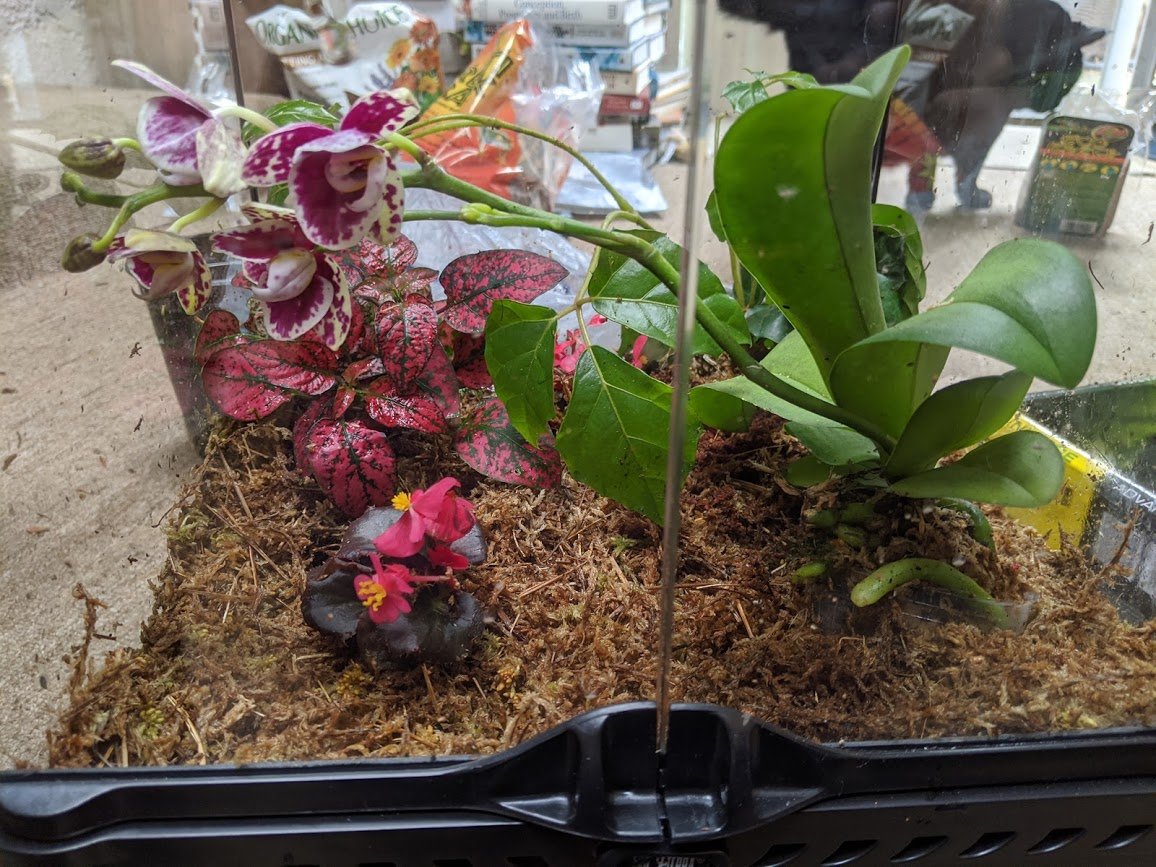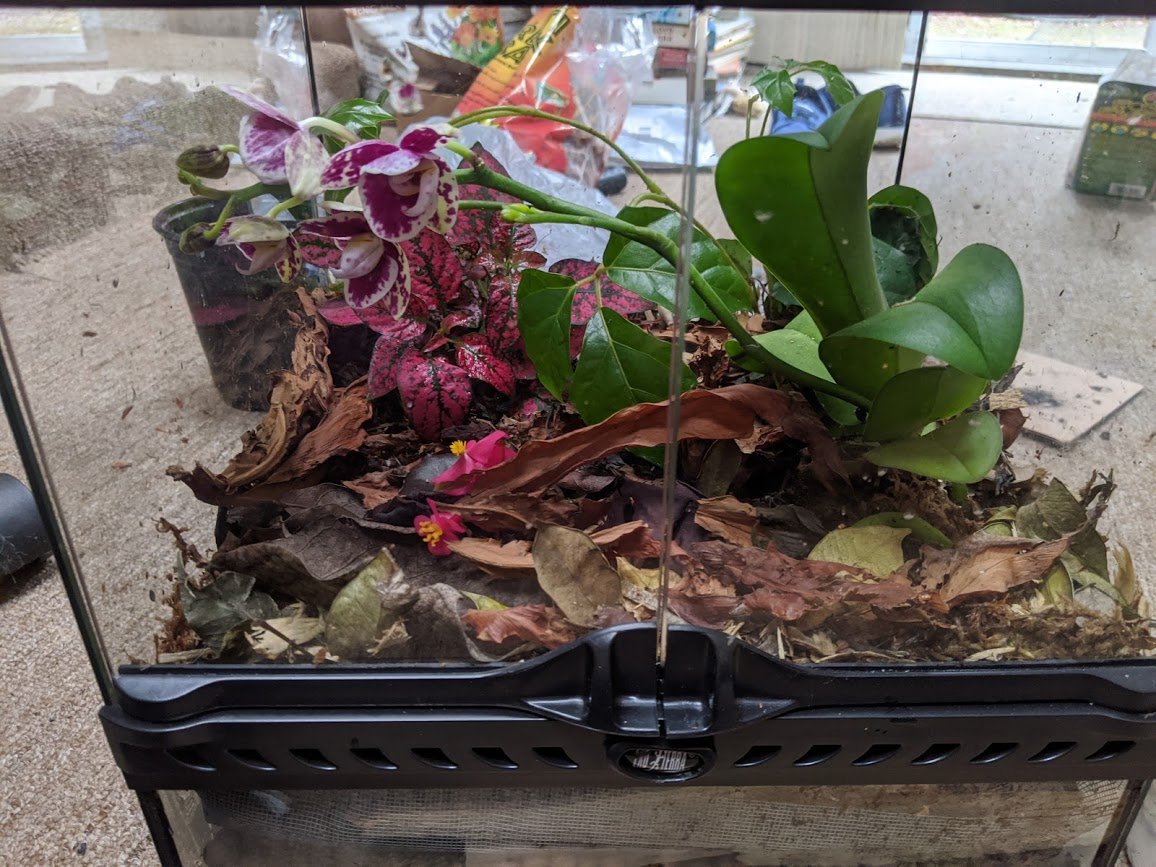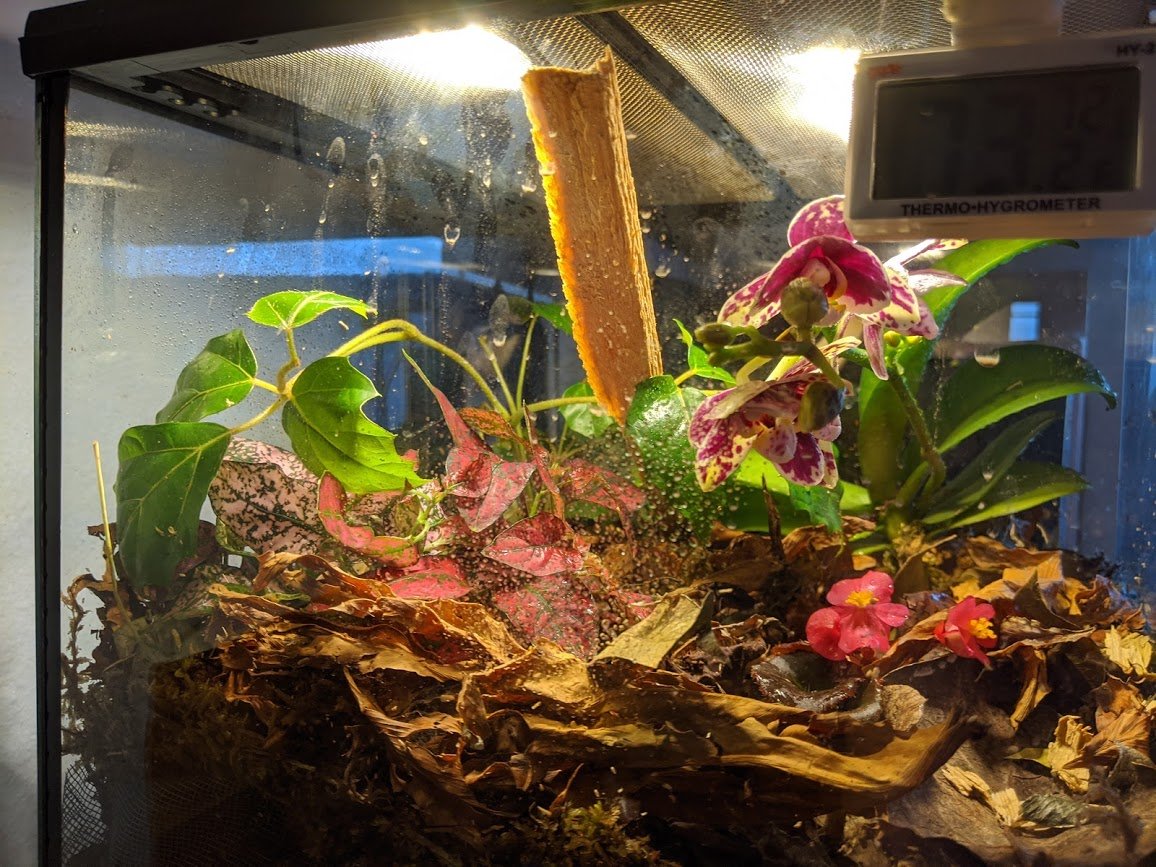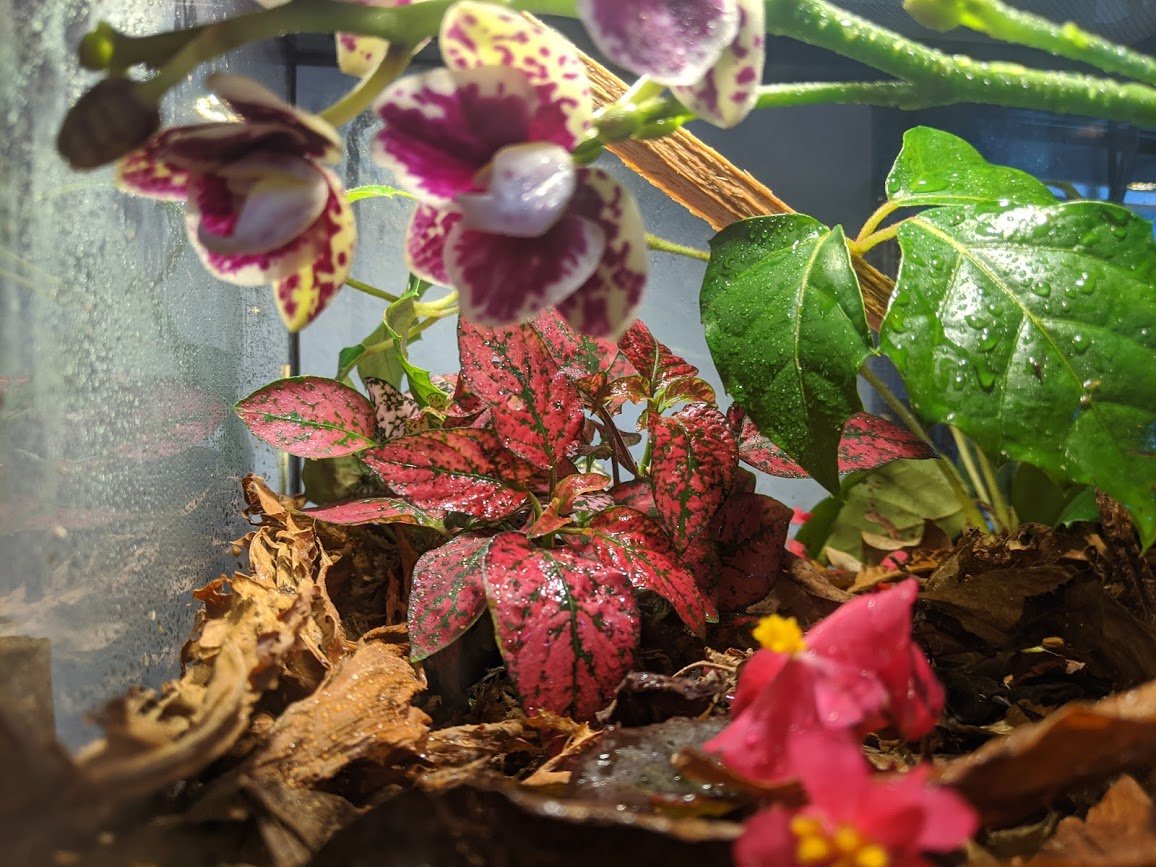My terrarium came in today! Here& #39;s the finished version, and a thread with my set-up process. This is my first time ever building a bioactive vivarium, so it was quite a learning experience.
Step one: Hydration.
I had to re-hydrate my sphagnum moss and coco coir to use them as substrates.
I also collected leaf litter from outside, which I wanted to sterilize before I put it in the terrarium. This resulted in me creating the most disgusting-smelling tea in the world.
I had to re-hydrate my sphagnum moss and coco coir to use them as substrates.
I also collected leaf litter from outside, which I wanted to sterilize before I put it in the terrarium. This resulted in me creating the most disgusting-smelling tea in the world.
Step two: False bottom.
This is essential for proper drainage so that the soil doesn& #39;t get stagnant and gross.
I washed a whole bag of hydroballs (little balls of clay) and put & #39;em on in there.
This is essential for proper drainage so that the soil doesn& #39;t get stagnant and gross.
I washed a whole bag of hydroballs (little balls of clay) and put & #39;em on in there.
Step three: Separation.
It& #39;s important to separate the substrate from the false bottom. The separator must be water-permeable but not something that will readily react with water like metal or paper. I went with a fiberglass window screen.
It& #39;s important to separate the substrate from the false bottom. The separator must be water-permeable but not something that will readily react with water like metal or paper. I went with a fiberglass window screen.
Step four: Substrate & Sphagnum.
I forgot to take photos of the substrate itself, but it& #39;s a mix of orchid bark, coir, sphagnum moss, charcoal, and organic potting soil.
Then I put another layer of moss on top.
I forgot to take photos of the substrate itself, but it& #39;s a mix of orchid bark, coir, sphagnum moss, charcoal, and organic potting soil.
Then I put another layer of moss on top.
The mix of substrate is important to allow for good drainage, high humidity, and enough food for the plants and bugs that will live in the soil. Tree fern fiber is also recommended for vivarium mixes but that stuff is expensive and hard to get so I decided not to go with it.
The layer of sphagnum on top simulates the layer of decaying plant matter on the forest floor and also helps with humidity. I am aiming to recreate a tropical climate, so the more humidity I can achieve, the better.
Step five: Plants.
I tried to find plants that would do well in high-humidity environments, and I ended up with begonia sumperflorens, cissus, hypoestes, and an orchid hybrid (doritaenopsis).
I tried to find plants that would do well in high-humidity environments, and I ended up with begonia sumperflorens, cissus, hypoestes, and an orchid hybrid (doritaenopsis).
The orchid is kind of an experiment. I read that they prefer to be a little root-bound, so instead of actually re-potting it, I just buried its pot in the substrate. We& #39;ll see if that is an effective solution!
Step six: Leaf litter.
I took the leaves out of the disgusting tea and dried them in the oven for a while. By the time I took them out, they were nicely desiccated! I spread them over the sphagnum, careful not to cover any of the living plants& #39; leaves.
I took the leaves out of the disgusting tea and dried them in the oven for a while. By the time I took them out, they were nicely desiccated! I spread them over the sphagnum, careful not to cover any of the living plants& #39; leaves.
Step seven: Lights and meter.
I moved the vivarium to its permanent home and installed the grow lights and the thermometer/hygrometer. I also put a little stick in there because eventually I& #39;m going to have a mantis in here and I want him to have plenty of climbing options.
I moved the vivarium to its permanent home and installed the grow lights and the thermometer/hygrometer. I also put a little stick in there because eventually I& #39;m going to have a mantis in here and I want him to have plenty of climbing options.

 Read on Twitter
Read on Twitter